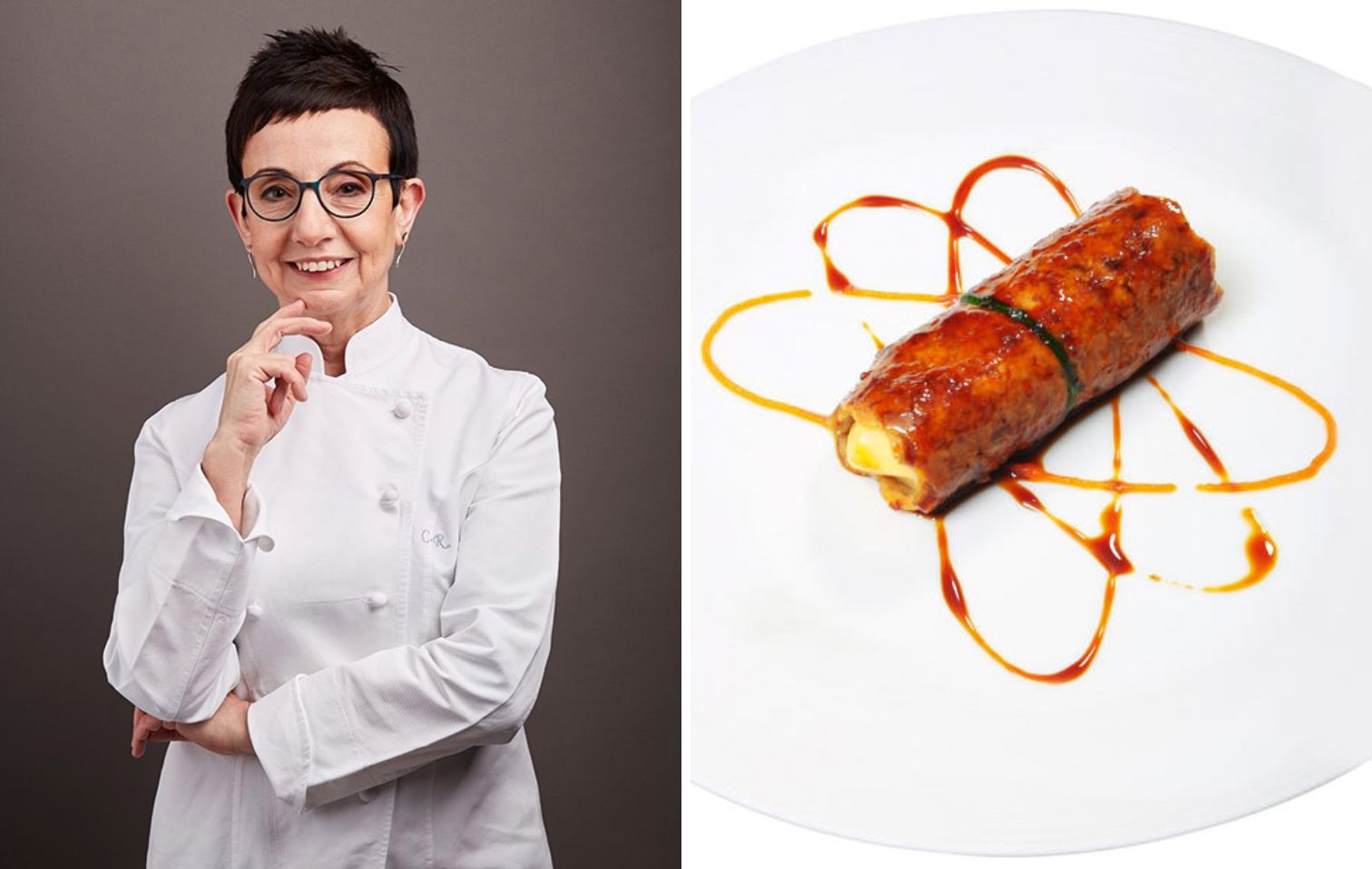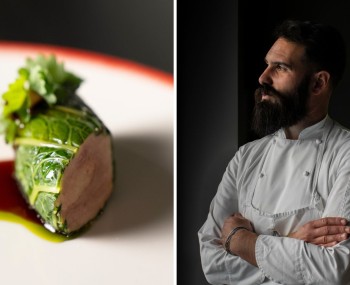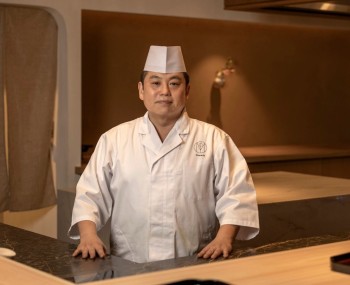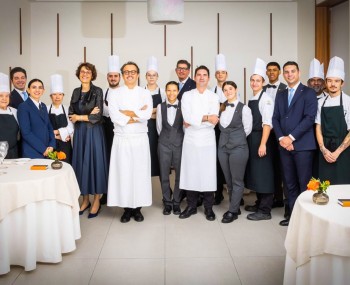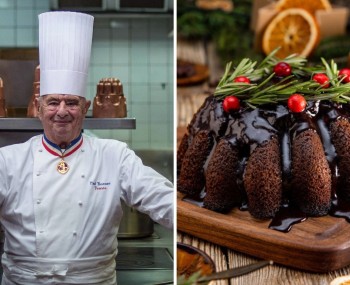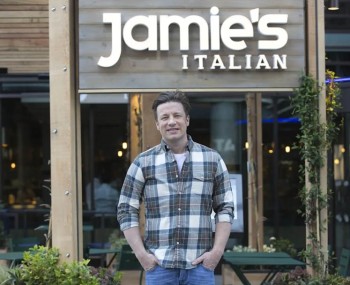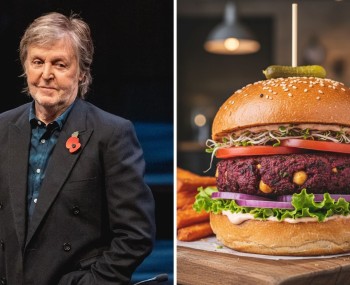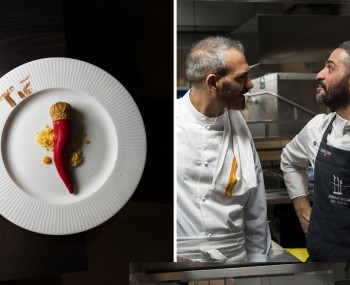The year she presented the dish to the public was particularly significant for the chef, as it coincided with the arrival of the third Michelin star at Sant Pau, now closed. But the real revolution lies in the reversal of perception, while keeping the memory of cannelloni intact.
The dish
Exactly 20 years ago, in 2005, one of the world's most award-winning chefs revolutionized one of the most beloved classics on the table: cannelloni. With her innovative “Canelón al revés” (upside down, ed.), Carme Ruscalleda did not just turn the dish upside down (with the meat on the outside and the fresh pasta, béchamel sauce, and melted cheese on the inside), but offered diners a totally new taste experience, while maintaining the essence of traditional baked pasta. In this specific case, we are talking about Catalan-style Cannelloni, characterized by the use of leftover meat from Christmas celebrations (a small ritual that distinguishes them from the Made in Italy recipe).
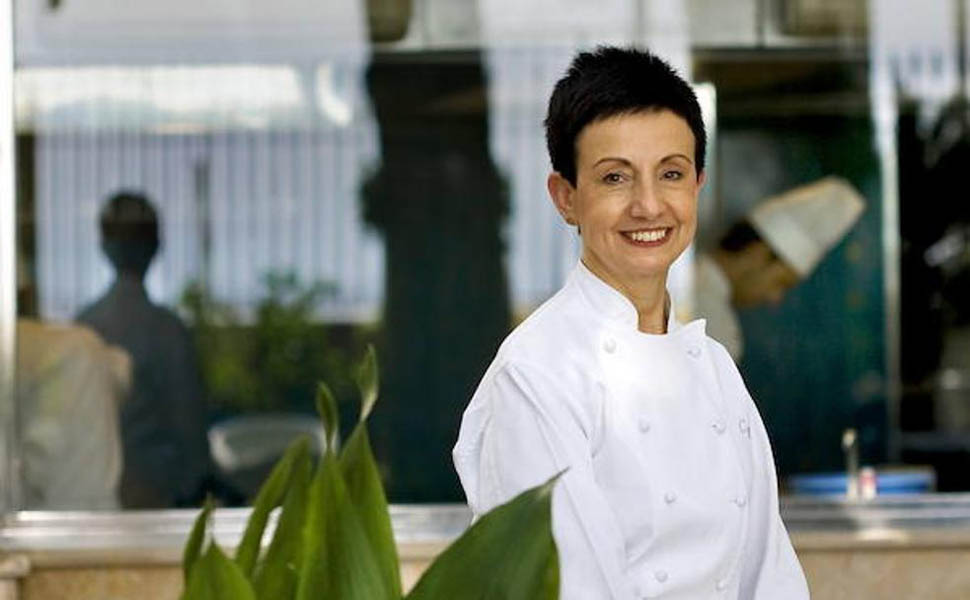
The year in which she officially presented the dish to the public was particularly significant for the chef, as it coincided with the award of the third Michelin star to Sant Pau (her legendary restaurant, which was subsequently closed and converted into a different format by her children), marking a radical turning point in her personal and professional life. Before reaching Michelin stardom, Ruscalleda cut her teeth in a delicatessen, gaining a deep understanding of Iberian culinary roots. It was this solid foundation that enabled her to break the rules later on. As she herself said, if she had tried to innovate without first mastering the culinary fundamentals, the result would have been a purely technical dish, devoid of soul and meaning.
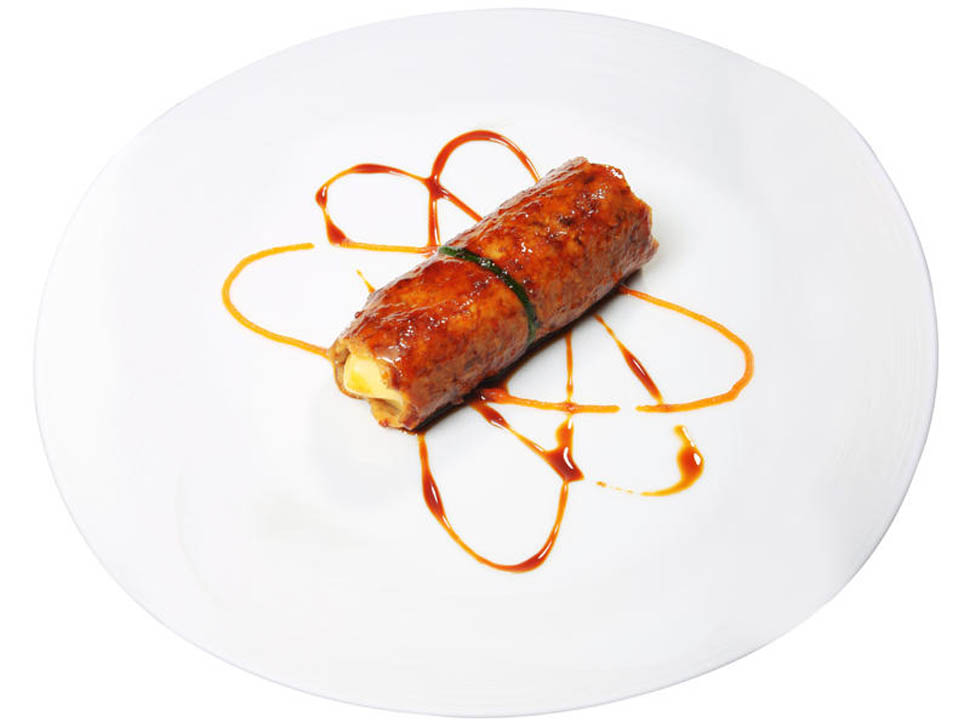
The recipe for “Canelón al revés” is complex and laborious: a real challenge for less experienced cooks. However, it represents a unique opportunity if you want to try your hand at a signature dish that has made history in avant-garde cuisine. Here is the procedure reported on the website gastronomiaycia.com.
The recipe for “Cannelloni al rovescio” (Upside-down Cannelloni)
Ingredients (serves 12)
For roasting the meat
- 500 grams of beef (shank)
- 500 grams of pork neck
- 3/4 of a whole chicken
- 2 carrots
- 2 leeks
- 2 onions
- 2 tomatoes
- 1/2 head of garlic
- 1 bay leaf
- a pinch of ground cinnamon
- a pinch of grated nutmeg
- 100 ml extra virgin olive oil
- 50 grams pork fat
- 100 ml brandy
- 2 slices of bread without crusts, soaked in milk
- salt
- pepper
For the gelatin paste
- 500 grams of very clean pork rind
- salt
- mineral water
- leek
- carrot
- parsley
- thyme
- bay leaf
For the fresh pasta
- 150 grams of strong flour (read the W parameter on the label)
- 80 grams of pasteurized egg yolks
- 2 grams of salt
For the béchamel sauce
- 500 ml of milk
- 500 ml of cream
- 30 grams of flour
- 35 grams of butter
- 10 grams of salt
- white pepper
- 30 ml of dry sherry wine
- grated nutmeg
For the cheese crust
- 50 grams of Parmigiano
- 50 grams of Emmental cheese
For the tomato sauce topping
- 50 grams of finely chopped shallots
- 50 ml of extra virgin olive oil
- 1/2 kilo of grated tomatoes without seeds
- 15 grams sugar
- 25 ml sweet sherry wine
- 50 grams candied tomatoes
- 50 ml mineral water
- salt
- white pepper
For the roast sauce topping
- 50 ml cooking broth
- 150 ml reduced veal broth
- 1 long, thin stalk of chives
Procedure
To roast the meat
Place the meat and chopped vegetables on a baking tray, mixing everything well but without overlapping. Season with salt, pepper, cinnamon, nutmeg, and bay leaves. Drizzle with pork fat and extra virgin olive oil. Bake at 190°C for 45 minutes, during which time the roast will brown.
Remove the baking tray from the oven and sprinkle with brandy, turn the meat and vegetables and return to the oven at 170°C for another 30 minutes. Then remove the baking tray from the oven again, turn the meat and vegetables and continue cooking at 150°C for another 30 minutes, until the meat is tender.
Put the meat and the two slices of bread soaked in milk in a food processor. Pass all the vegetables and their cooking liquid through a medium-sized food mill. Add a little sauce to the minced meat to mix it well. Season with salt. Add the rest of the cooking sauce, strain it well, and set aside.
In a large bowl, mix the minced meat with the gelatin paste (explained later in the recipe), using a ratio of 100 grams of roast beef to 28 grams of gelatin paste. Once well mixed and seasoned with salt, cut into 50-gram portions. Spread the portion between two sheets of parchment paper, forming a 10 x 25 cm rectangle. Place in the refrigerator.
For the gelatin paste
Place the pork rinds, blanched to remove the hairs, in a container with water and vinegar and leave to soak overnight in the refrigerator. The next day, place the drained pork rinds in a pot and cover with mineral water. When it boils, add the bunch of herbs and season with salt. Cook for two hours, until completely tender. Drain and blend with a food processor until you obtain a very fine gelatinous paste.
For the fresh pasta
In a large bowl, mix the flour, egg yolks, and salt. Form a ball and let it rest, wrapped in plastic wrap, in the refrigerator for 12 hours. Cut the dough into small pieces and roll them out with a rolling pin to make them thinner. Then, roll them out with a pasta machine until they reach the desired thickness (not too thick).
Using a 12 x 8.5 cm rectangular template, cut out the pasta sheets. Store them in an airtight container in the refrigerator to prevent them from drying out.
For the béchamel sauce
Heat the milk in a small saucepan. In another small saucepan, add the butter. When melted, add the flour and cook over low heat, stirring constantly, for just 30 seconds.
Add the cold cream and mix well with a whisk.
Add the boiling milk, salt, pepper, and a pinch of nutmeg and continue stirring with a whisk until it comes to a boil. Cook for just 30 seconds, stirring constantly. Remove from the heat and add the dry sherry.
Mix well. Pour the béchamel sauce into a 15 x 20 cm container. Once cooled, freeze in a blast chiller. Cut the frozen béchamel sauce into 8 x 2 cm rectangles and store in the freezer.
For the cheese crust
Grate both cheeses onto baking paper. Grate the Parmigiano first, then the Emmental. Bake in the oven at 160°C for 10 minutes, until dry and crisp. Store in an airtight container.
For the tomato sauce topping
In a saucepan with extra virgin olive oil, sauté the chopped shallot. When golden and caramelized, add the grated tomato. Season with salt and pepper and leave to caramelize slowly. Add the sugar and sherry and reduce. Pour the sauce with the caramelized tomato and water into the Thermomix bowl and blend until very smooth. Season with salt and pepper and set aside in a kitchen bottle.
For the roast sauce topping
Mix the veal demi-glace with the roast gravy, season with salt and pepper, strain and set aside. Blanch the chives in boiling salted water. Leave to cool and set aside.
Finishing and presentation
Roll out the dough (12 x 8.5 cm), cover with a portion of frozen béchamel sauce and seal the edges with egg yolk. Put three liters of mineral water with 30 grams of salt in a pot and boil the stuffed pasta for 10 minutes. Cool in ice water.
Roll out the rectangular slices of meat (10 x 25 cm) and place the boiled and filled pasta and a little crispy cheese in the center. Gently wrap the meat around the slices and tie with a sprig of chives to form a cannelloni. Wrap the cannelloni again with parchment paper; this will allow them to heat up in the oven without drying out. On the plate, draw two ovals with the roast sauce and one with the tomato sauce. Place the cannelloni on top, upside down, straight out of the oven (190°C for 5 minutes), brushing them with the roast sauce to make them shiny.

